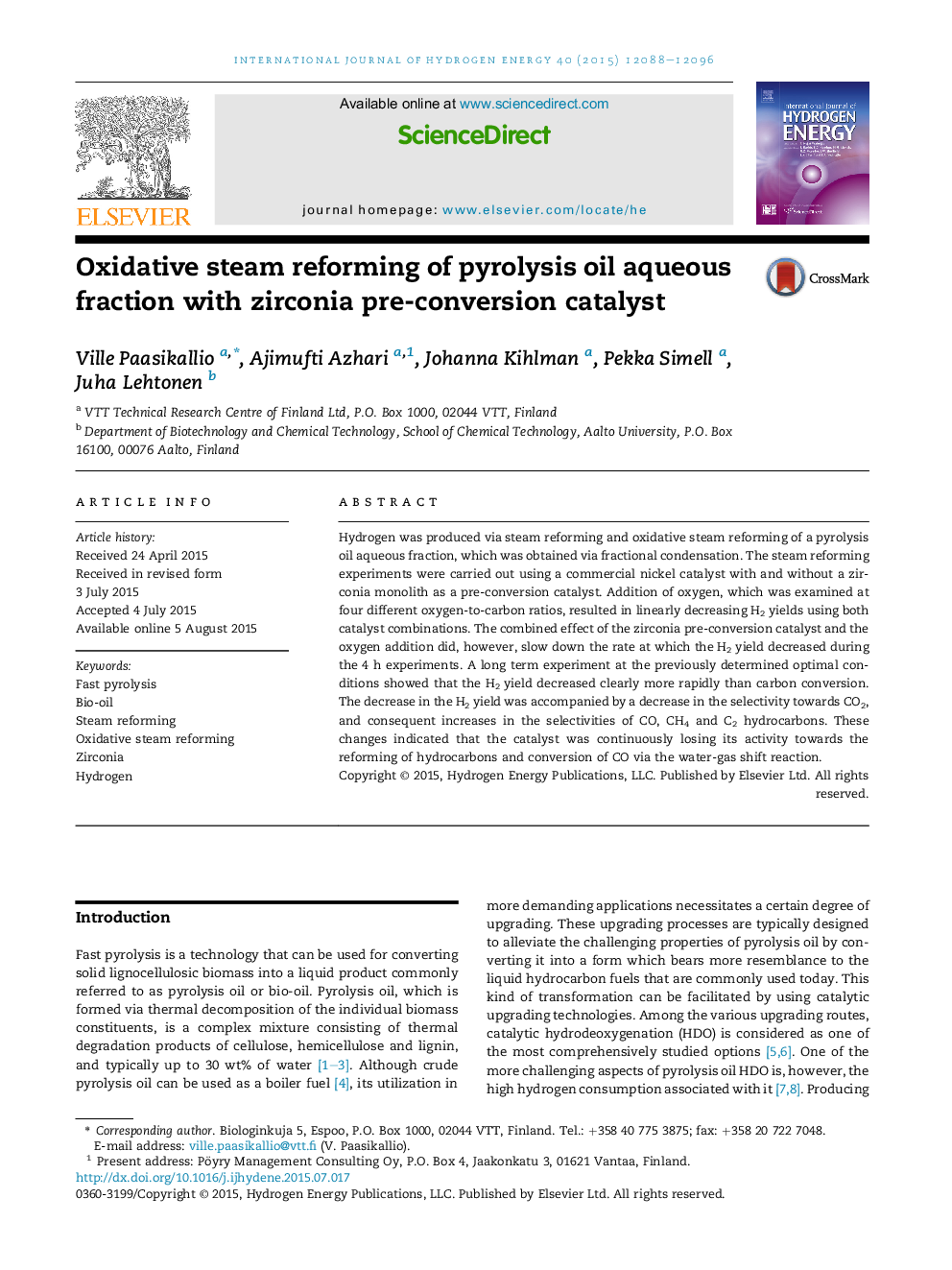| Article ID | Journal | Published Year | Pages | File Type |
|---|---|---|---|---|
| 7713866 | International Journal of Hydrogen Energy | 2015 | 9 Pages |
Abstract
Hydrogen was produced via steam reforming and oxidative steam reforming of a pyrolysis oil aqueous fraction, which was obtained via fractional condensation. The steam reforming experiments were carried out using a commercial nickel catalyst with and without a zirconia monolith as a pre-conversion catalyst. Addition of oxygen, which was examined at four different oxygen-to-carbon ratios, resulted in linearly decreasing H2 yields using both catalyst combinations. The combined effect of the zirconia pre-conversion catalyst and the oxygen addition did, however, slow down the rate at which the H2 yield decreased during the 4Â h experiments. A long term experiment at the previously determined optimal conditions showed that the H2 yield decreased clearly more rapidly than carbon conversion. The decrease in the H2 yield was accompanied by a decrease in the selectivity towards CO2, and consequent increases in the selectivities of CO, CH4 and C2 hydrocarbons. These changes indicated that the catalyst was continuously losing its activity towards the reforming of hydrocarbons and conversion of CO via the water-gas shift reaction.
Related Topics
Physical Sciences and Engineering
Chemistry
Electrochemistry
Authors
Ville Paasikallio, Ajimufti Azhari, Johanna Kihlman, Pekka Simell, Juha Lehtonen,
